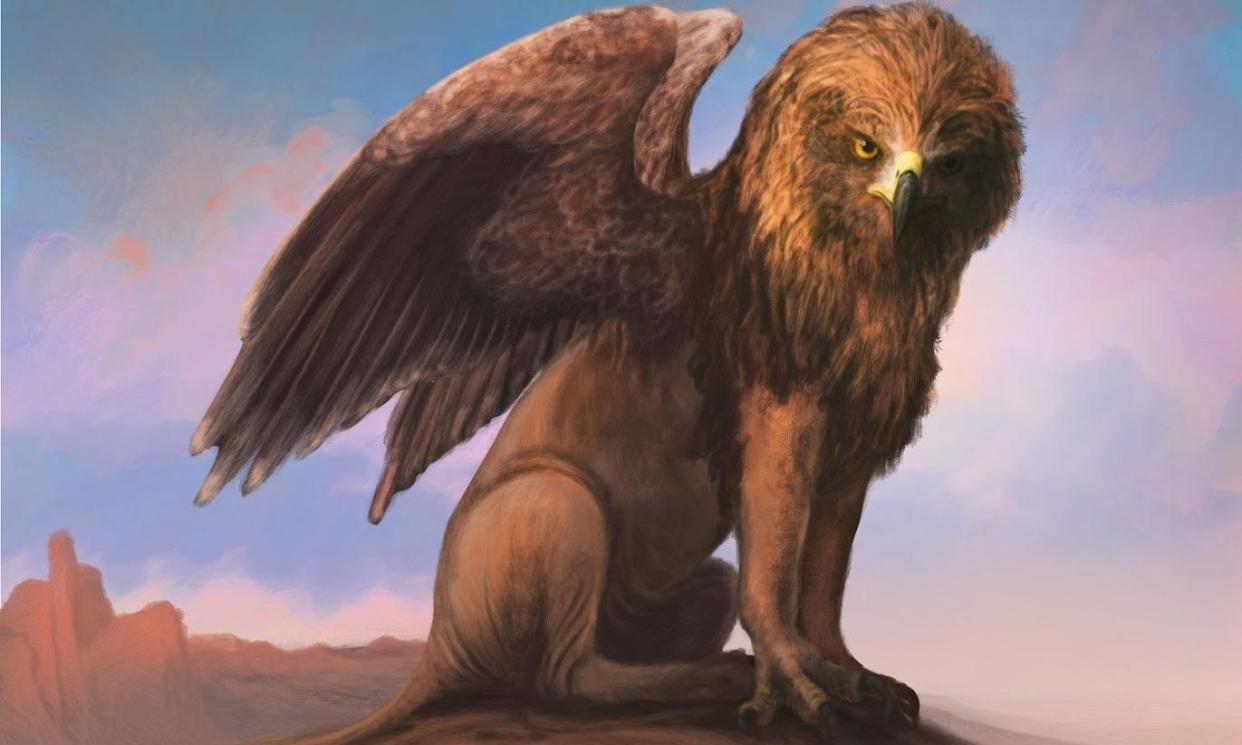Rewriting the myth: experts doubt griffin was inspired by dinosaurs

From the fearsome, clawed creatures of Greek mythology to the dancing animal Alice met in Wonderland, the legendary griffin has a long and colourful history.
But now experts say it is time to rewrite the fantastical beast’s backstory, arguing there is little evidence for the popular idea that the creature was inspired by dinosaur fossils in central Asia.
“The whole idea is conjecture and speculation,” said the artist and palaeontologist Dr Mark Witton of the University of Portsmouth.
Griffins have the head and wings of an eagle on the body of a lion. The oldest depictions arise in art from ancient Egypt and the near east, with some dating to before 3,000 BC, but the creatures also have a long history in central Asia and Greece.
One popular theory is that fossils from a central Asian horned dinosaur called protoceratops played a key role in the development of the griffin.
The idea, put forward more than 30 years ago by the classical folklorist Adrienne Mayor, suggests that these fossils, spotted by Scythian goldminers, helped to fuel stories of strange creatures with four legs and a beak that laid eggs in nests on the ground.
These tales were carried along trade routes, either giving rise to the art and literature of the griffin in ancient Greek culture, or becoming associated with existing images of the mythical creature and fuelling its legend.
But writing in the journal Interdisciplinary Science Reviews, Witton and colleagues cast doubt on this “geomyth”.
Among the criticisms, the team point out that griffins share few anatomical details with the dinosaurs, and that while ancient Greek texts refer to the idea of griffins – or “gryps” – as gold-guarding beasts of central Asia, protoceratops fossils were found nowhere near ancient gold deposits.
They also say evidence suggests art depicting griffins spread eastwards from Greece and the near east to central Asia, rather than the opposite direction, while the nesting behaviour attributed to griffins – and which is shared by protoceratops – was depicted on a 12th-century BC Mycenaean vase, hundreds of years before the tales of the dinosaurs could have reached Greece from farther east.
Fossils often require extensive excavation, something the team say ancient nomads were unlikely to undertake.
While Witton said the griffin had a different significance to different people – and that these ideas had mixed over time – he maintains that depictions of the animal most likely arose as an imaginative fusion of familiar, living creatures: birds and big cats.
Witton said it was possible the dinosaur hypothesis caught on because it combined three popular fields into one story: ancient history, mythology and dinosaurs. He added that the theory also encompassed the appealing notion that ancient people were smarter than we gave them credit for, not only discovering and excavating fossils, but using them for reconstructions.
However, Mayor told the Guardian she stood by her original research that led to the griffin-dinosaur hypothesis – although she welcomed alternative interpretations.
“The Greek and Roman authors who discuss the gryps reported that the stories about the unknown animal originated in central Asia, recounted by people who travelled along the ancient caravan trails between China and the Mediterranean,” she said. “Recognising that we cannot be certain that those stories were inspired by fossil observations, I still await a counter-hypothesis that fully accounts for the Greco-Roman literary and artistic evidence.”


